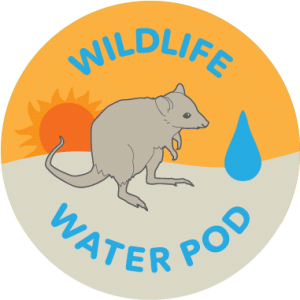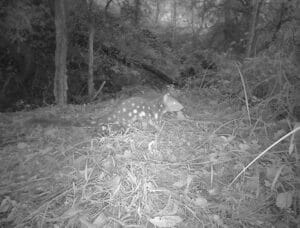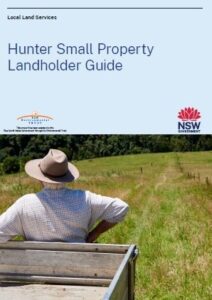“Green Drought” – what does it mean for our native plants and animals?
The MidNorth Coast is currently experiencing a “green drought”, which means that the recent (and very welcome) rainfall events have stimulated pasture growth and greening of paddocks in the region. While there are clear guidelines for farmers on how to manage such an event, there is little information regarding how these events affect our native flora and fauna.
What we do know is that the declaration of the El Nino event by the Bureau of Meteorology this year has not been rescinded, and that we are still expecting above average temperatures and below average rainfall for the coming summer months. We also know that of the rain that does fall in Australia, roughly 90% evaporates back into the atmosphere; around 2% soaks into the ground and refills important groundwater reserves; and less than 10% forms run-off that will recharge our streams, rivers and lakes. This run-off is very important to sustain our natural ecosystems and organisms that comprise them.
The recent rain events in my area have barely wet the ground, let alone generated any run-off. The ground cover in the local forest areas is crisp and dry, and while appearing in better shape than in early October, the native vegetation is still looking rather desiccated. The coastal vegetation around Forster and along the coast is still brown and burnt after the relentless north-east gales and hot weather in late winter and early spring this year. The first week of December brought a significant heatwave to all of NSW, with temperatures exceeding 40°C in some areas of our region.
Whilst it may seem overwhelming to think on the impacts of human induced climate change and drought on our local flora and fauna, we can all take action to support our native bushland areas and support fauna through drought and heatwaves. Here’s a few ideas:
- Place a water bath in your garden for birds and animals and keep it clean. Add stones or sticks if it is more than 5 cm deep to prevent accidental drownings. Never add sugar, electrolytes or honey to the water as it will make animals sick. Clean, fresh water is all they need.
- If you own a property with remnant native vegetation on it, take a regular walk over your land and control weeds as you go. Be alert for new arrivals that may be imported by birds and other mechanisms. By reducing the competition from weeds, your native vegetation is likely to be less impacted by water scarcity during drought.
- Install artificial water troughs on your property to provide native fauna with reliable and clean water. Native animals get very stressed during heatwaves, so provision of shelter and clean water is vital to supporting their survival. And yes, even koalas need to drink on hot days. If you have a rural property, and would like to install elevated water stations, take a look at the WIRES Water for Wildlife program. WIRES are inviting eligible landowners to sign up to their program and will provide, free of charge, a TreeTroff to those people who are willing to participate and contribute to their program. These waterers were specifically designed to provide water to Koalas and other arboreal wildlife during the 2019 drought period, and this is a wonderful opportunity for local landholders.
- Build your own wildlife water pod by following the guidelines developed by DPIE in 2020. These pods are cheap and easy to build and work by delivering gravity fed water under a vacuum with a low evaporation rate.
The PLCM program ran a DIY workshop on Dec 2nd in which Landowners were able to construct their own Wildlife Water Pod. They learnt how to manage, install and monitor their Pods. Find out more about how you can manage them by taking a look at our Wildlife Water Pod Guideline. - If you don’t own a rural or bushland property, consider joining your local bushcare, coastcare or landcare group and assist with weeding local bushland or coastal reserves. Weeds add another burden to our local vegetation communities by competing for light and, importantly, water, as well as taking up space, changing nutrient cycling and sometimes inhibiting native plant growth with chemical exudates in the soil. Volunteering is rewarding and fun. Contact your local Landcare Coordinator for more information.
- Consider toning down your own carbon footprint by consuming less, particularly at Christmas; growing some of your own food; reducing food waste by planning your weekly meals and composting any food waste you do create.
- If you own a rural property with remnant native vegetation and would like advice on what to do to best conserve and restore it, consider signing up for the Land for Wildlife program – a great, entry-level private land conservation initiative that supports landholders with technical advice and educational opportunities.

If you do build your own Wildlife Water Pod and would like one of our very cute stickers to place on it, email me at plc@midcoast2topslandcare.org
This article is possible thanks to the shared work of the NSW Biodiversity Conservation Trust and Landcare NSW under the Private Land Conservation Matters project, supported locally by MidCoast Council




